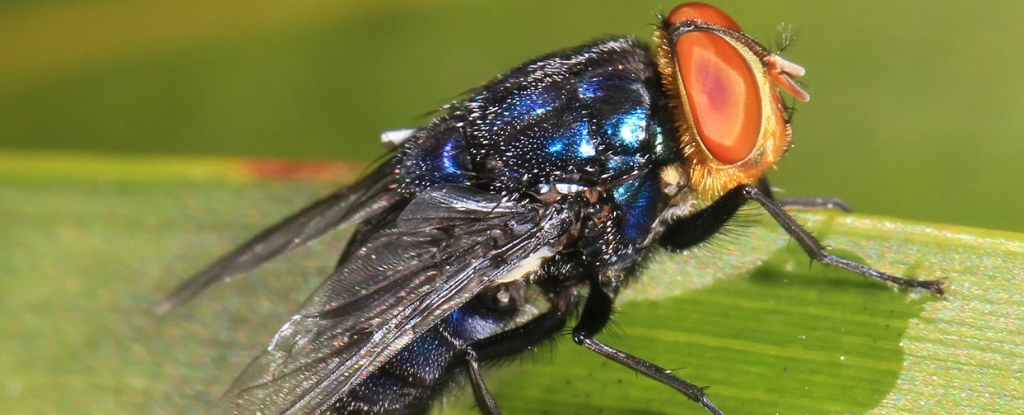Invasive Flesh-Eating Fly Threatens Livestock and Human Health in the Americas












2025-06-19T12:02:54Z

A disturbing development has emerged as a flesh-eating parasitic fly, known as the New World screwworm (Cochliomyia hominivorax), is making a comeback in North and Central America. Previously eradicated from these regions, this notorious parasite is raising alarms for its potential catastrophic consequences on the cattle industry, as well as posing a threat to a variety of hosts, including humans and pets.
The screwworm fly, particularly its female counterpart, has a specific and gruesome reproductive strategy: she is attracted to the scent of open wounds where she lays her eggs. Once her larvae hatch, they aggressively feed on living tissue, which can lead to severe suffering and, without timely intervention, death for their unfortunate hosts. This devastating cycle has led to significant losses in livestock and poses a health risk to humans.
Historically, the problem of screwworm infestations was rampant in the United States, particularly in Texas during the 1960s, when cattle farmers reported treating approximately 1 million cases annually. In response to this public health threat, a collaborative effort between scientists and government agencies between the 1960s and 1990s deployed the sterile insect technique (SIT). This innovative method involved releasing billions of sterile male flies into the environment, drastically reducing the reproductive potential of the population. Female screwworms typically mate just once before laying eggs, so when they mated with the sterile males, no viable offspring were produced.
Thanks to this extensive eradication campaign, which reportedly cost around $750 million (£555 million), the screwworm was declared extinct in the US by 1982. Following this, a facility in Panama was established that regularly released sterile flies to act as a barrier, preventing the screwworm from migrating northward from South America.
However, since 2022, the New World screwworm has begun to re-emerge, spreading northward through various Central American countries, with a notable increase in cases reported in Panama in 2023. By November 2024, the parasite had reached Mexico, raising concerns about its potential spread into the United States. Experts speculate several reasons for this resurgence, including cattle movements that may inadvertently carry the flies, rising temperatures that enhance the survival and development of the screwworm, and the possibility that female flies are adapting their mating behaviors to evade sterile males.
Currently, the situation has become dire, with an estimated 17 million cattle at risk in Central America alone. Mexico, with its larger cattle population, faces an even greater threat, where around 14 million cattle are at risk in states like Texas and Florida. Furthermore, humans are not safe from this infestation—at least eight cases of screwworm infestations in people have been documented in Mexico since April.
In response to this alarming situation, the United States has enacted a temporary ban on live animal imports from Mexico. Collaborative efforts among the governments of the US, Central America, and Mexico are underway to improve surveillance and initiate measures to eradicate the New World screwworm. As part of this effort, sterile screwworm pupae are being produced and sterilized through irradiation at a facility in Panama, currently generating over 100 million sterile flies per week.
Despite these efforts, experts suggest that much larger numbers of sterile flies will be necessary to effectively combat the screwworm resurgence. For context, during the successful eradication efforts in the 1980s, production rates exceeded 500 million sterile flies per week. To address this need, the USDA is investing $21 million to enhance a fruit fly production facility in Metapa, Mexico, which will also produce an estimated 60 to 100 million sterile screwworms weekly.
It is critical to note that the production, sterilization, and release of these flies is a lengthy process, and immediate reductions in the wild screwworm population may not be seen right away. History indicates that integrated control methods, including the use of anti-parasitic veterinary medicines to both repel the flies and treat infestations as they arise, are essential. Additionally, trained personnel for effective surveillance will be critical in managing this situation, especially considering that an entire generation of veterinarians, technicians, and farmers have no prior experience dealing with screwworm infestations.
The looming threat of climate change adds another layer of complexity, as warmer temperatures may not provide the cool weather conditions that previously aided in the eradication efforts. Ongoing research is needed to better understand how these factors will affect current eradication plans.
This article has been republished with permission from The Conversation under a Creative Commons license. For the original article, please refer to their website.
 Hans Schneider
Hans Schneider
Source of the news: ScienceAlert